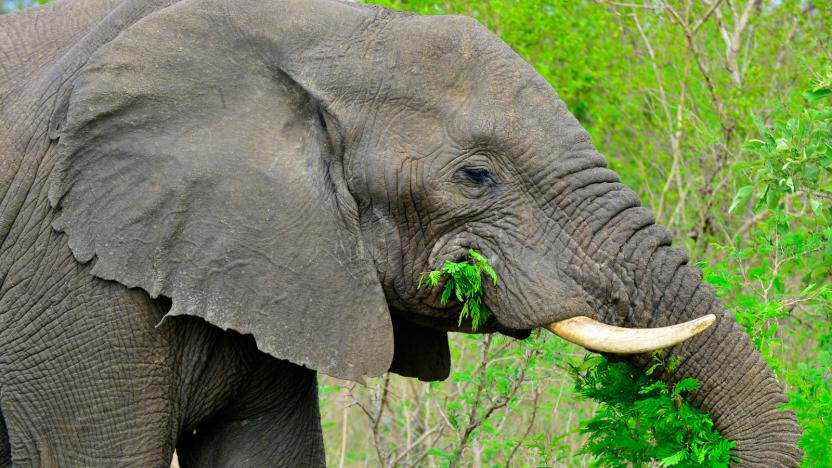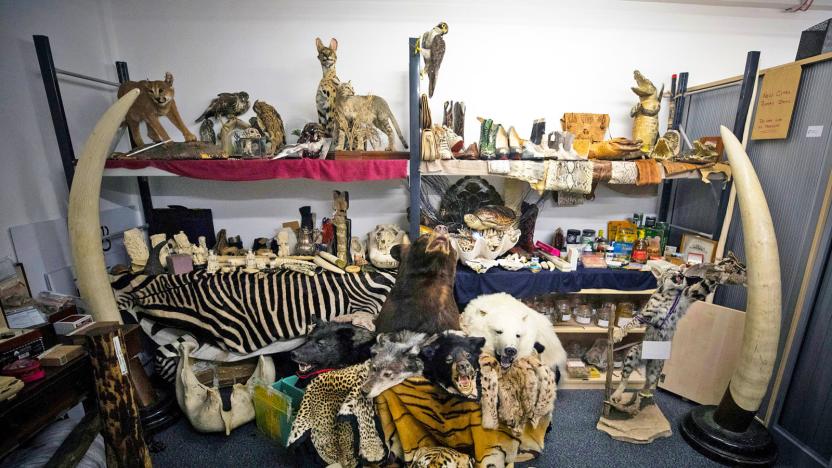endangeredspecies
Latest

Intel-powered camera uses AI to protect endangered African wildlife
Technology is already in use to help stop poachers. However, it's frequently limited to monitoring poachers when they're already in shooting range, or after the fact. The non-profit group Resolve vows to do better -- it recently developed a newer version of its TrailGuard camera that uses AI to spot poachers in Africa before they can threaten an endangered species. It uses an Intel-made computer vision processor (the Movidius Myriad 2) that can detect animals, humans and vehicles in real-time, giving park rangers a chance to intercept poachers before it's too late.

Tech giants like Google and Alibaba are working to save endangered species
Google, eBay and other technology leaders are aiming to protect the world's animals. Why? In a widely unregulated social-media world, many tech platforms have become a haven for the wildlife black market, a $20 billion industry. The sale of illegal animal goods -- from ivory to exotic pets -- is the fourth-largest criminal global trade industry behind narcotics, counterfeiting and human trafficking, according to TRAFFIC, a wildlife-trade-monitoring network. In the past decade, the sale of these goods and species has moved from illicit backroom dealings in stores to apps and online shopping ads.

6 technologies that protect endangered animals from poachers
By Cat DiStasio Just about everyone with internet access spent last week reading about crimes against animals happening in far-flung places on the globe. If that sort of news moves you, it might leave you feeling a bit small and helpless. Luckily, there are a number of organizations doing fantastic work to protect wild animals from poachers -- and they could use your help. You can do something as simple as donating your old cellphone to turn it into an anti-poaching detection system. Most solutions designed to conserve wildlife focus on tracking the movements of protected animals and vigilantly warding off potential dangers. However, intrepid conservationists are also using everything from 3D printing to poisonous pink dyes to ward off hunters. Read on for six technologies that protect endangered animals -- and help support the organizations working on the ground to protect these majestic creatures.

The US wants you to track endangered wildlife with your phone
The next time you go fishing, make sure to bring your smartphone... it might just help you protect an endangered species. The US Fish and Wildlife Service is partnering with the developers of mobile app FishBrain to crowdsource conservation data. A new feature in the free software lets you catalog as many as 50 threatened species (aquatic or otherwise) during a trip, helping conservationists find out both where these critters live and why their populations are dropping. It seems paradoxical to ask anglers for help saving coastal life, but it makes sense when you think about it -- they're the most likely to see these rare animals, and they're often well aware that extinction has dire consequences. The big challenge will simply be getting enough people using the app to provide meaningful input. [Image credit: AP Photo/John Flesher]

Empire State Building projection shines a light on endangered animals
If you were hanging around midtown Manhattan this weekend, you may have noticed some exotic animals projected on to the side of the Empire State Building. What was that all about? As it turns out, that was one of the more ambitious examples of tech-powered advocacy in recent memory. It was Projecting Change, a collaboration between the Oceanic Preservation Society and Obscura Digital that used striking imagery to highlight the plights of endangered species, such as snow leopards and manta rays. The piece relied on 40 stacked projectors to beam 5K video on to the legendary New York City skyscraper. At 33 floors tall, the resulting image was clear within about 20 blocks' radius -- you could have had a good view at 14th Street. There's sadly no talk of repeating the event in the near future, but there are replays both on YouTube and Discovery if you want to see what happened. [Image credit: Joel Sartore and Ron Robinson/Obscura Digital]

Rhino horn cameras promise to catch poachers in the act
Anti-poaching teams can only do so much to protect rhinos. Their immediate presence can deter rogue hunters, but a lot of the slaughter happens before these teams even know that something's wrong. That's where non-profit group Protect's RAPID (Real-Time Anti-Poaching Intelligence Device) should come in handy. The system uses a blend of heart rate sensors, GPS tags and cameras drilled into one of the rhinos' horns (don't worry, it's painless) to warn conservationists when a rhino is under threat. If a rhino's heart starts racing or suddenly goes still, observers get an alert that lets them turn on the camera to see if something's wrong. Ideally, this will prevent poachers from even firing a shot -- they know that they'll likely be caught within minutes if they chase or kill a tagged animal.

Hawaiian analog TV shutoff to come early, saving God's creatures
Technological progress marches forward, assimilating all those who resist -- we know this well in our line of work, but sometimes you've got to stand up and say, "The line must be drawn here! This far, no further!" Take the digital TV transition in the United States for example: all the analog TV signals will be shut off in February. It won't be pretty, but it'll be progress. Hawaii, though, has a dilemma: it just so happens that the analog towers that'll be torn down are awfully close to the nests of the state's adorable and endangered petrel birds, whose nesting season also occurs in February. Hence Hawaii's digital switch will occur a month early on January 15th, so you 17,000 affected Hawaiians have that much less time to grab converter boxes, or you'll end up watching the next season of Lost in person on your beautiful beaches instead of your ancient tube televisions.


